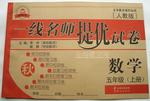题目内容
4.The World Health Organization warns that millions of people are dying every year from indoor air pollution.Nearly three billion people are unable to use clean fuels and technologies for cooking,heating and lighting.These findings show that the use of deadly fuels in inefficient stoves,space heaters or lights is to blame for many of these deaths.
WHO officials say indoor pollution leads to early deaths from stroke,heart and lung disease,childhood pneumonia and lung cancer.Women and girls are the main victims.These diseases can often result from the burning of solid fuels.These fuels include wood,coal,animal waste,crop waste and charcoal.
The United Nations found that more than 95percent of households in sub-Saharan Africa depend on solid fuels for cooking.It says huge populations in India,China and Latin American countries,such as Guatemala and Peru,also are at risk.
Nigel Brace is a professor of Public Health at the University of Liverpool.He says researchers are developing good cook-stoves and other equipment to burn fuels in a more efficient way.There are already multiple technologies available for use in clean fuels.There is really uite an effective and reasonably low-cost alcohol stove that is made by Dometic(a Sweden-based company)that is now being tested out.LPG (liquified petroleum gas)cook is obviously widely available and efforts are under way to make those efficient.Another interesting development is electric induction stoves(电磁炉).WHO experts note some new,safe and low-cost technologies that could help are already available.In India,you can buy an induction stove for about 8.00.And in Africa you can buy a solar lamp for less than 1.00.
But,this,the agency says,is just a start.It is urging developing countries to use cleaner fuels and increase access to cleaner and more modern cooking and heating appliances.
32.What does the indoor pollution mainly result from?A
A.Poisonous fuels.B.High technology.
C.Space heaters.D.Solar energy.
33.How is Paragraph 3mainly developed?C
A.By showing differences.B.By describing a process.
C.By making a list.D.By analyzing causes.
34.What can we infer from the text?B
A.Indoor pollution results in many diseases.
B.Most of the deaths are in developing countries.
C.The solid fuels are used in more efficient ways.
D.There is no indoor pollution in developed countries.
35.Which of the following is true of different technologies?D
A.LPG cooks are being tested out.
B.Alcohol stoves are widely used now.
C.Electric induction stoves are expensive.
D.Solar lamps are very cheap in Africa.
分析 本文属于记叙文阅读,作者通过这篇文章向我们讲述了世界卫生组织说,每年有数百万人死于室内空气污染,并列举了一些例子,说明发展中国家的人死亡人数更多,如今研究人员正在开发清洁燃料.
解答 32.A 细节理解题,根据第二段These findings show that the use of deadly fuels in inefficient stoves,space heaters or lights is to blame for many of these deaths.可知室内空气污染来自于可以致命的燃料,故选A.
33.C 推理判断题,根据第三段Women and girls are the main victims.These diseases can often result from the burning of solid fuels.These fuels include wood,coal,animal waste,crop waste and charcoal.可知这一段是通过列举的方式叙述的,故选C.
34.B 推理判断题,根据第四段It says huge populations in India,China and Latin American countries,such as Guatemala and Peru,also are at risk.可知在中国,印度,和拉丁美洲的国家的人们存在风险,因此可以推断大多数的死亡发生在发展中国家,故选B.
35.D 细节理解题,根据倒数第二段In India,you can buy an induction stove for about 8.00.And in Africa you can buy a solar lamp for less than 1.00.可知非洲的太阳能灯很便宜,故选D.
点评 考查学生的细节理解和推理判断能力.做细节理解题时一定要找到文章中的原句,和题干进行比较,再做出正确选择.在做推理判断题时不要以个人的主观想象代替文章的事实,要根据文章事实进行合乎逻辑的推理判断.

 一线名师提优试卷系列答案
一线名师提优试卷系列答案-I'm sorry,I didn't know the time or I ______ earlier.( )
| A. | will leave | B. | would leave | C. | had left | D. | would have left |
-I __ that the party was great.( )
| A. | haven't heard; am saying | B. | don't hear,said | ||
| C. | didn't hear; was saying | D. | can't hear; will say |
一 Not yet.He ______ be home by now.( )
| A. | can | B. | need | C. | must | D. | should |
-No problem.I like _____ when people are open and direct.( )
| A. | that | B. | this | C. | it | D. | one |
| A. | the; the | B. | a; the | C. | a; 不填 | D. | the; 不填 |
| A. | an expensive blue cotton | B. | a cotton blue expensive | ||
| C. | a blue expensive cotton | D. | a cotton expensive blue. |